Environmental Factors
Environmental factors that affect organisms
| Environmental Factor | Definition |
|---|---|
| Abiotic | These are non-living factors |
| Biotic | These are living factors |
| Climatic | These are the average weather conditions that affect the community in an ecosystem |
| Edaphic | These refer to the soil |
(* is what effects humans (I am not sure on this thought))
Abiotic Factors
These are the non-living features of an ecosystem (i.e the physical and chemical conditions) that affect the community
Abiotic Factors Include
- Temperature *
- Light intensity *
- Air speed
- Water current
- Humidity *
- pH *
- Dissolved oxygen
- Salinity
- Nitrate, phosphate and other plant nutrients
Abiotic factors in a woodland
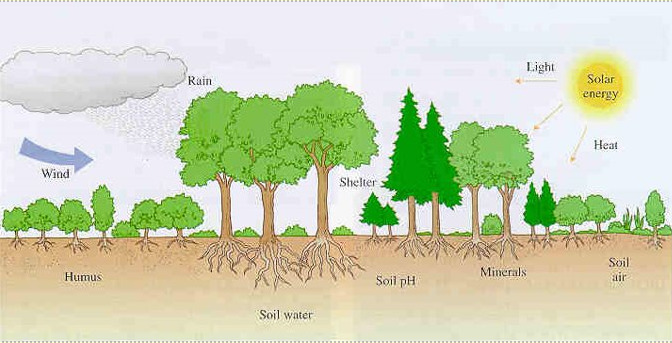
Biotic Factors
These are the living features of an ecosystem that affect the other members of the community
Biotic Factors Include:
- Plants for food and shelter *
- Predators *
- Prey *
- Parasites and pathogens
- Decomposers (Fungi - return minerals to the soil)
- Competitors *
- Pollinators *
Climatic Factors
These are elements of the climate (weather) that influence the life and distribution of the organisms that live in a particular environment
Climatic Factors Include
- Temperature *
- Rainfall *
- Humidity *
- Wind
- Light intensity (including seasonal variations) *
- Day length
Edaphic Factors
These are the physical, chemical and biological characteristics of the soil that influence the community
Edaphic Factors Include
- Soil type *
- Soil pH *
- Available (soil) water *
- Air and mineral content *
- Humus
- Soil texture and structure
Aquatic Environmental Factors
The following are also considered as factors:
- Light penetration
- Currents
- Wave action
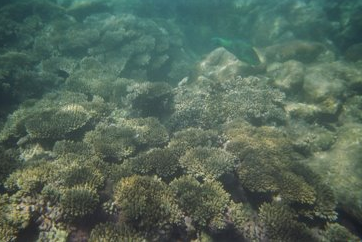
Energy Flow
What is an ecosystem?
A community of living organisms interacting with one another and their non-living environment within a particular area e.g. woodland, etc.
Energy Flow
Ecosystems are unable to function unless there is a constant input of energy from an external source
Where does this energy come from?
The Sun (Primary source of energy)
The Sun
The sun is the primary source of energy for our planet

Energy Flow is the pathway of energy transfer from one organism to the next in an ecosystem due to feeding, e.g. along a food chain
Feeding allows energy to flow from one organism to another in an ecosystem
Energy Flow in the Ecosystem

Producer = Organism that makes it’s own food e.g. plants
Consumers = Organisms that cannot make their own food
Food Chain
is a flow diagram that begins with a plant and shows how food/energy is passed through a series of organisms in a community
Each organism feeds on the one before it
A food chain ends when there is not enough energy to support another organism
An example of a food chain: grass -> rabbit -> fox
A Grazing Food Chain
is one where the initial plant is living e.g.
Grass → grasshoppers → frogs → hawks
Honeysuckle → aphids → ladybirds → thrushes
Seaweed → winkles → crabs → herring gulls
Phytoplankton → zooplankton → copepod → herring
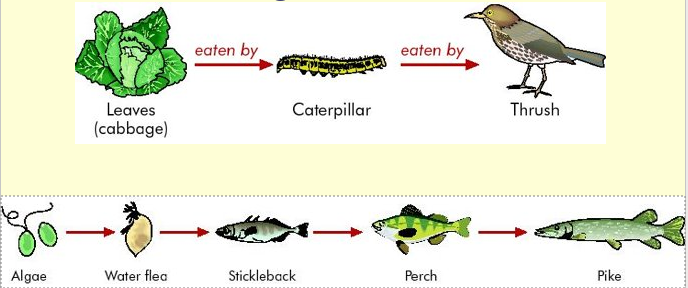
A Detritus Food Chain
is one where the chain begins with dead organic matter and animal waste (detritus) e.g.
Detritus → edible crab → seagull
Fallen leaves → earthworms → blackbirds → hawks

Food Web
This is a chart showing all the feeding connections in the habitat/ecosystem
Constructed by showing the links between all the interconnection food chains in the habitat
The interconnected food chains in an ecosystem
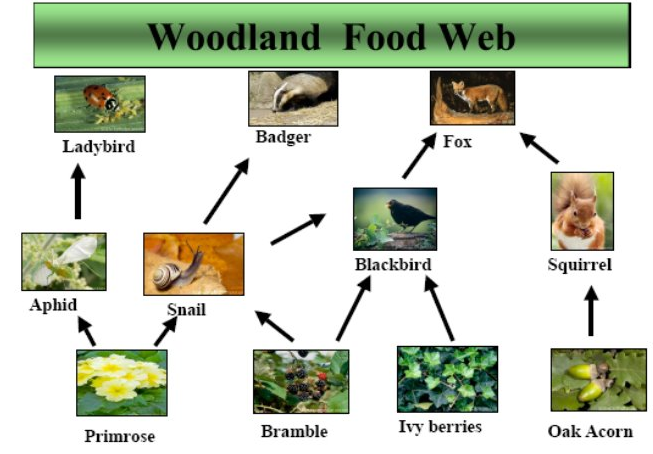
A woodland food web
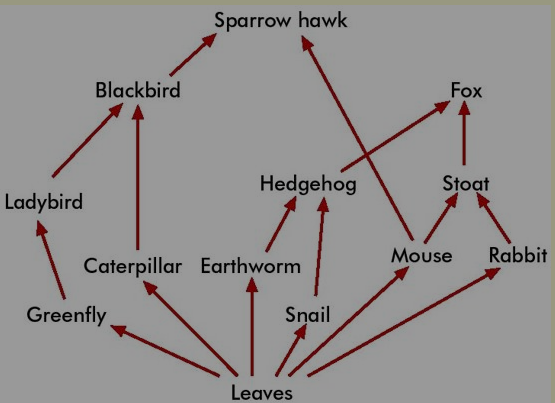
Another food web
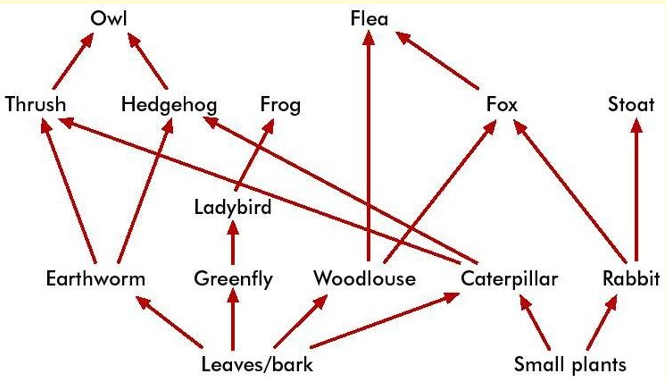
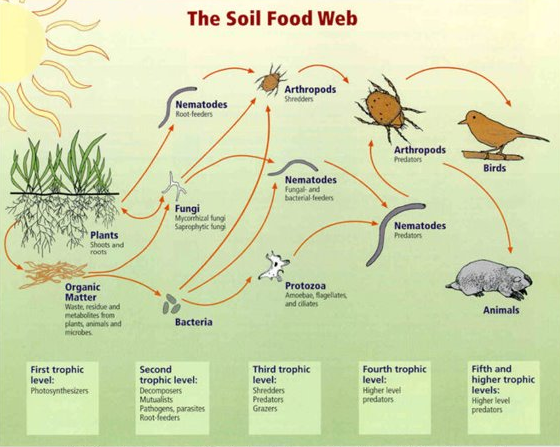
Producers
Producers are organisms capable of making their own food by photosynthesis, e.g. green plants
Primary producers are the first members of a food chain
Consumers
Consumers are organisms that feed on other organisms. They cannot make their own food. There are three types:
- Primary consumers - feed on producers
- Secondary consumers - feed on primary consumers
- Tertiary consumers - feed on secondary consumers
Woodland food chain
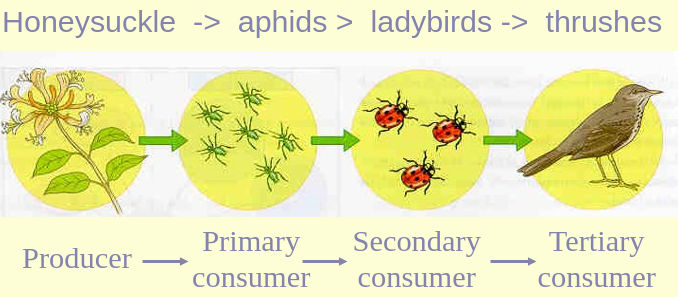
Trophic Level
This refers to the position of an organism in a food chain
Plants are at the 1st trophic level (T1) and Herbivores occupy the 2nd trophic level (T2)
Carnivores that eat herbivores are at the 3rd trophic level (T3)
The 4th trophic level (T4) is often occupied by the top carnivore
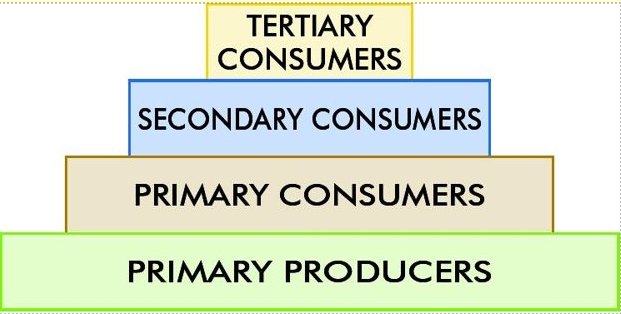
Pyramid of Numbers
A diagram that represents the numbers of organisms at each trophic level in a food chain
Bottom layer is the largest and represents a very large number of primary producers
The next layer smaller and represents a smaller number of primary consumers
The next layer - the no. of secondary consumers
The uppermost layer where there may be only one tertiary consumer
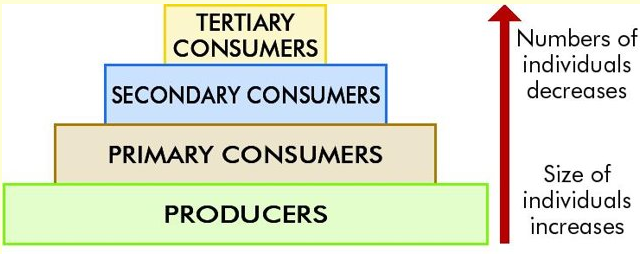
To construct a pyramid of numbers
- Count the primary producers and place them at the base of the pyramid
- Count each consumer and include them according to their status (primary or secondary consumer) in the pyramid
- The apex of the pyramid should include tertiary or top carnivores
- Draw the pyramid so that the area/volume of each level is proportional to the number of organisms found